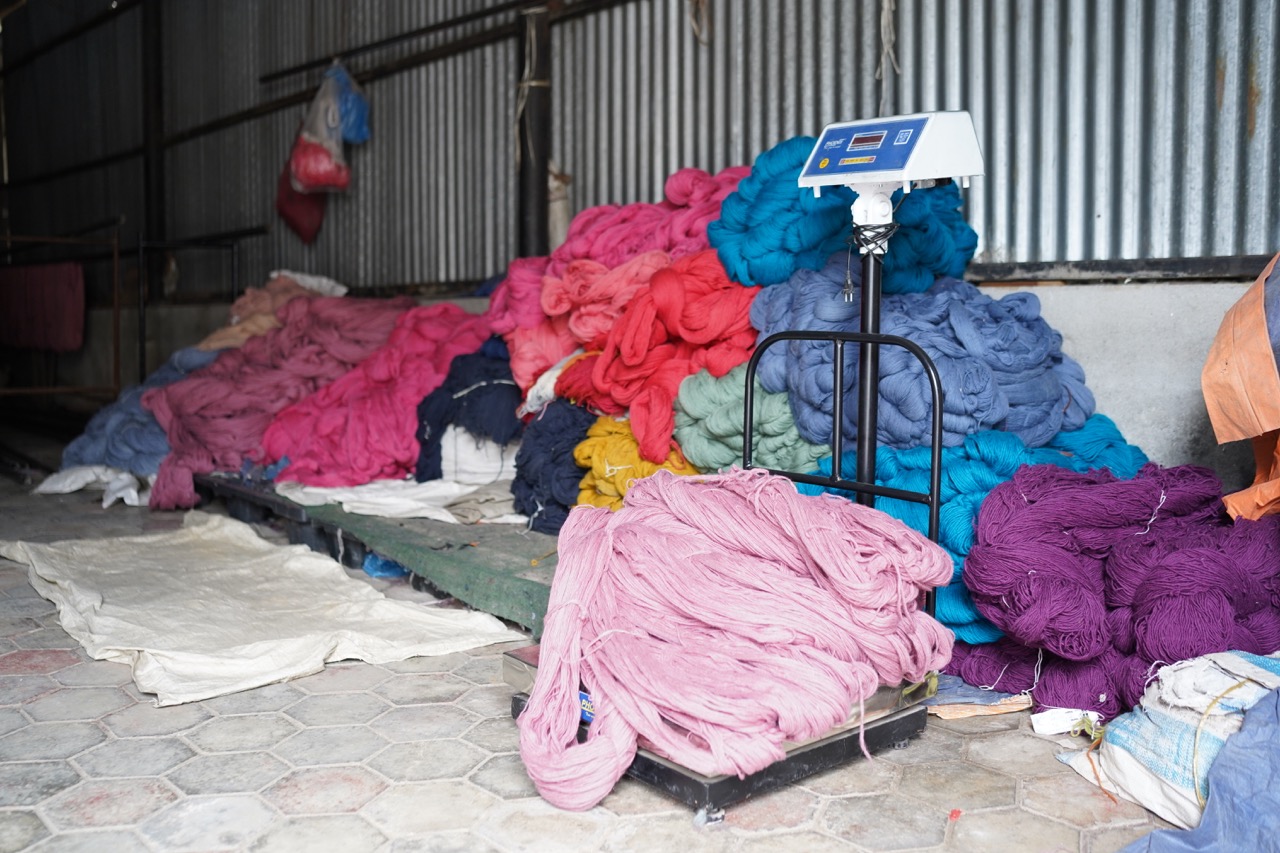Located in Mulpani, near central Kathmandu along the banks of the Manohara River, is Boudha Dyeing House—a pioneer in the quiet shift toward safer and more environmentally responsible yarn dyeing. The family-run dyeing workshop is introducing steps that help protect workers’ health and reduce pollution affecting nearby communities and the river ecosystem.
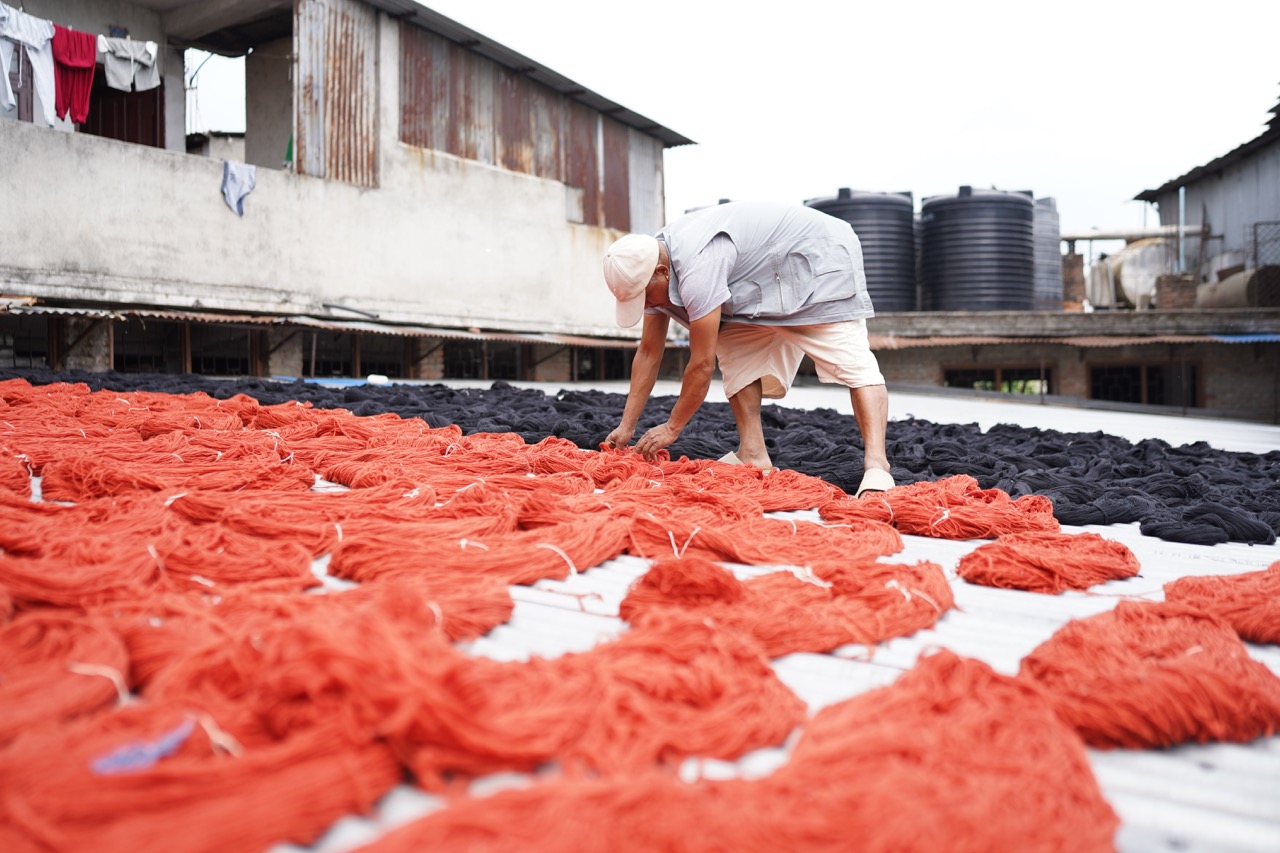
Nepal’s hand-knotted carpet sector grew rapidly in the 1970s and 1980s, when Tibetan refugees and local entrepreneurs developed a distinct Tibetan-Nepali style that gained international recognition. And by the 1990s, carpets had become one of Nepal’s top exports, providing livelihoods for tens of thousands of people. It was in this rapidly evolving context, in 1993, that Suman and Ratee Shrestha founded Boudha Dyeing House. Suman’s background in carpet materials and small-scale dyeing allowed him to spot a gap in the market: while most dye houses at the time served multiple industries, none specialised only in carpet yarns. So the Shresthas decided to do just that.
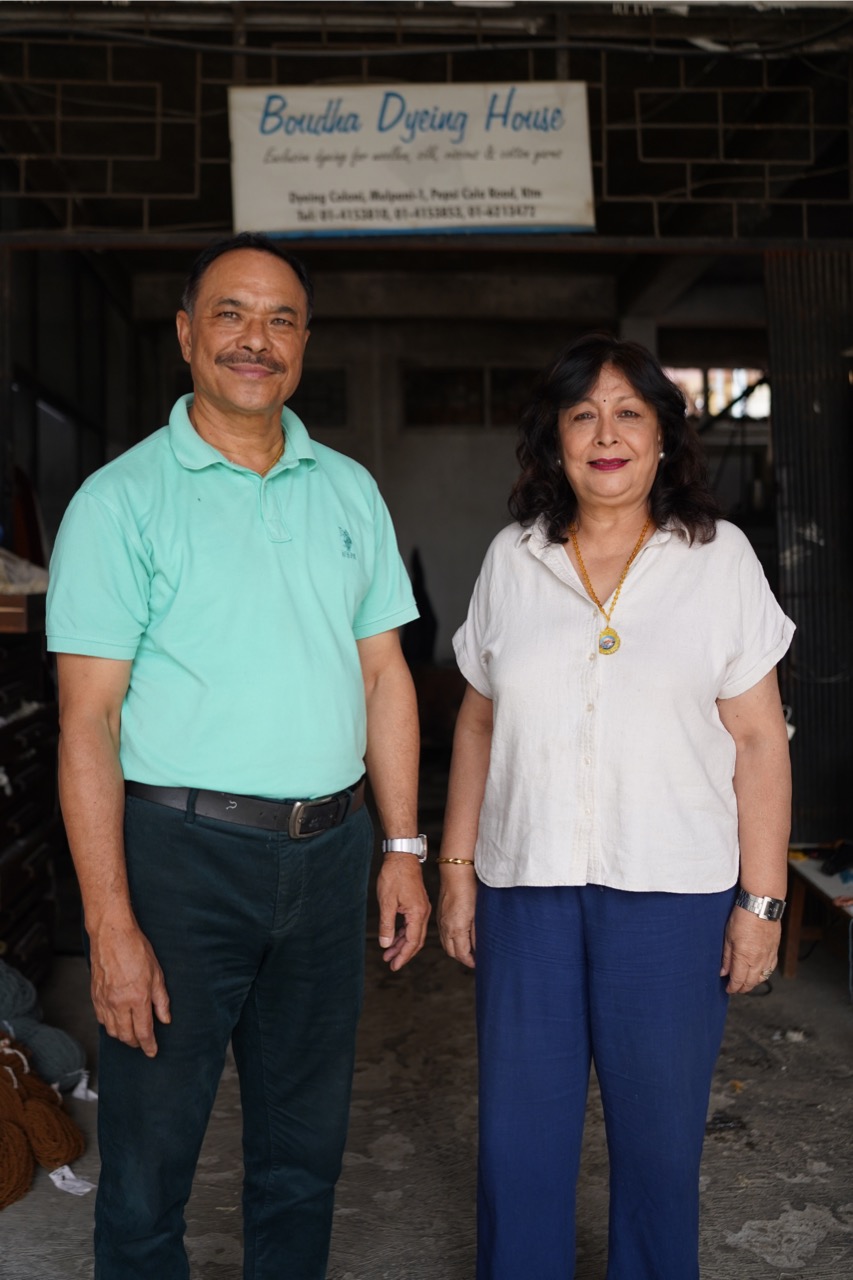
In the over 30 years since, Boudha Dyeing House has built its reputation on delivering consistent, high-quality results. It has achieved this despite the serious challenges Nepal’s carpet industry faced throughout the late ’90s and mid-2000s, as reports of child labour and poor working conditions brought widespread criticism and a decline in global demand. In fact, Boudha Dyeing House’s true passion for supporting the sector’s broader efforts to raise product quality and workplace standards would make it a strong example of the new fair trade principles, ethical labour standards, and environmental compliances that became growing priorities across the country—with organisations like Label STEP playing key roles in supporting this transition.
A History of Wool Dyeing in Nepal
Dyeing has evolved over time, and its industry has changed with it. Early carpet production relied on natural dyes from goods such as walnut husks and turmeric. Though this method can produce beautiful results, it has limited colour palettes and lengthy and difficult dyeing processes. The introduction of vegetable dyes and imported high quality synthetic dyes expanded the possibilities. These new dyes offered not only greater colour options but also colour consistency and durability. However, the arrival of cheap dyestuffs—often imported from China or India—also introduced substances with higher toxicity and environmental impact, including Azo dyes, some of which are known to be carcinogenic. Today, synthetic dyes remain the most commonly used in the industry, yet their use is largely unmonitored.
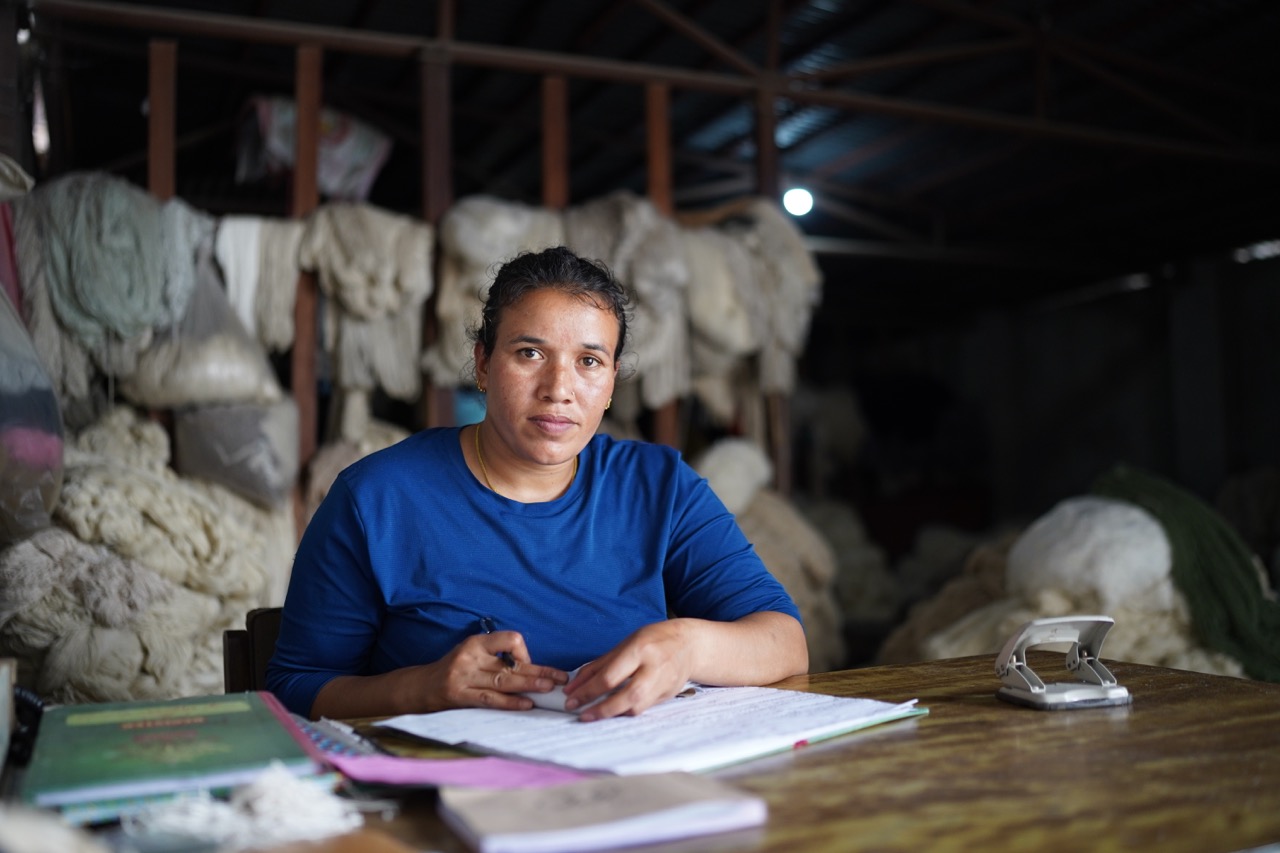
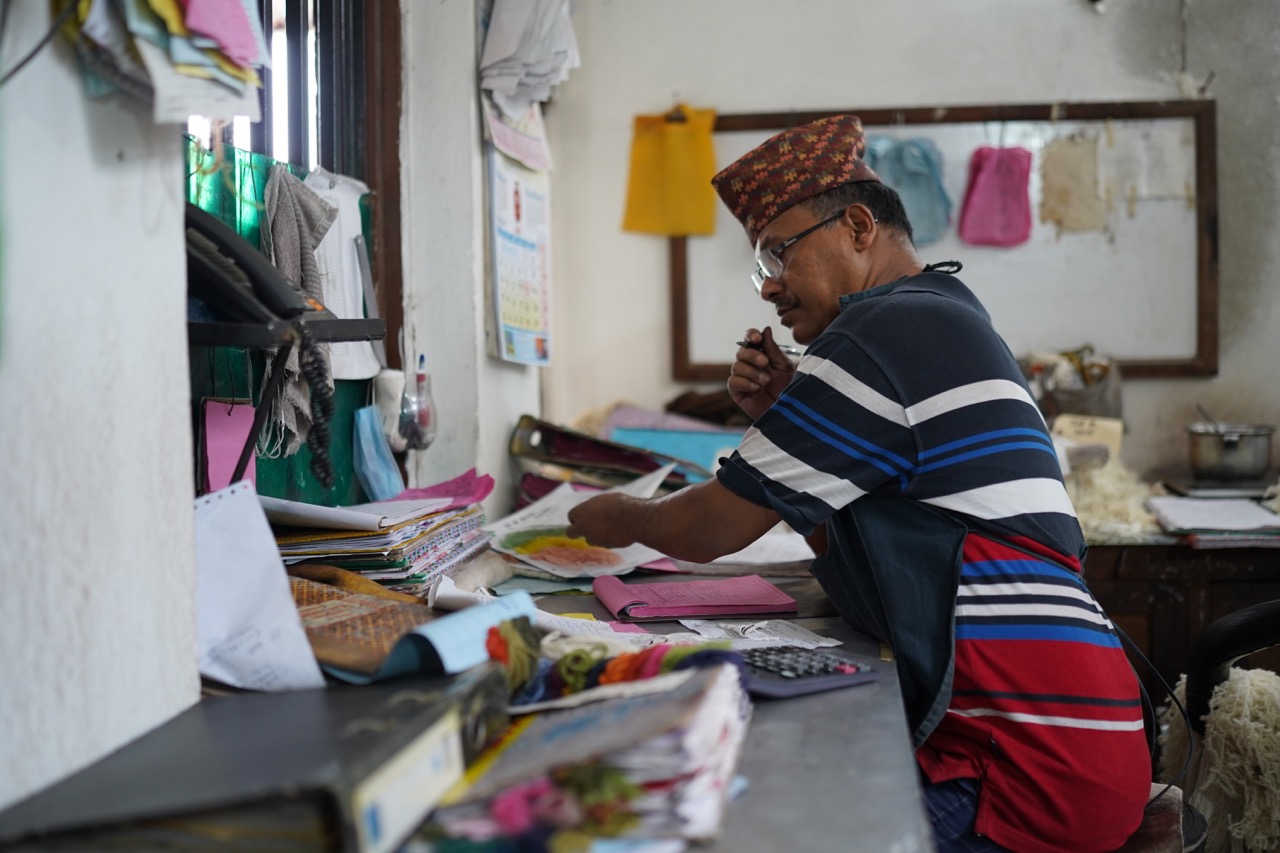
Structured Growth: Balancing Quality, Innovation, and Market Shifts
In an industry where cheaper, lower-grade dyes are widely available, the company chose a different path, blending traditional know-how with modern processes. The family-run facility works with azo-free synthetic dyes and explores water-efficient techniques and improved wastewater management, prioritising quality over quantity by using high quality imported dyes known for their colour fastness and safety. Rather than pursuing large-scale overhauls like a full return to natural dyes, the team at Boudha focuses on practical improvements that balance quality, affordability, and environmental responsibility. This includes upgrading equipment, refining processes for better resource efficiency, and continuing to use safer dye formulations. Their steady, specialised approach supports clients’ demands for quality while responding to international expectations for more ethical and sustainable production. And in 2025, the workshop is able to process an impressive 20–25 tons of yarn per month, working with wool, silk, hemp, and other natural fibres.
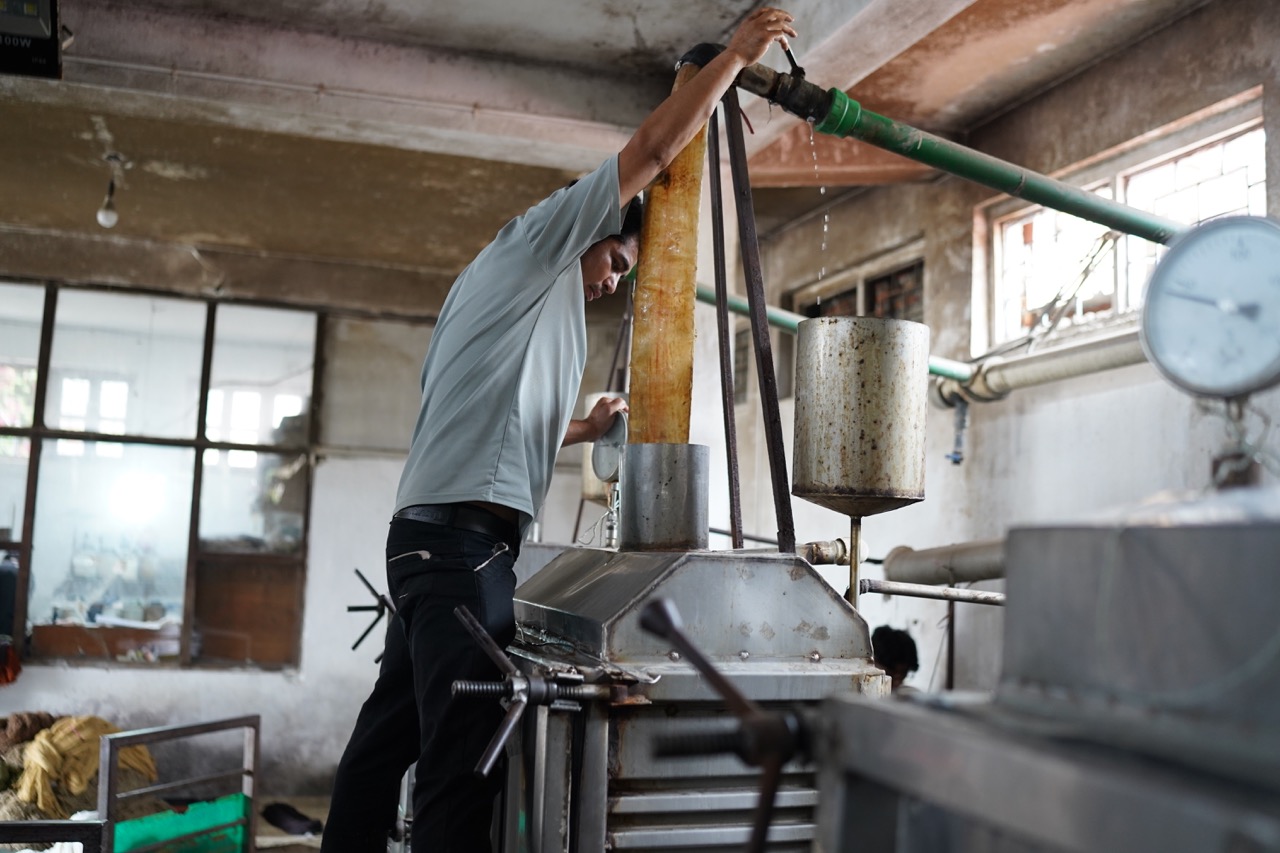
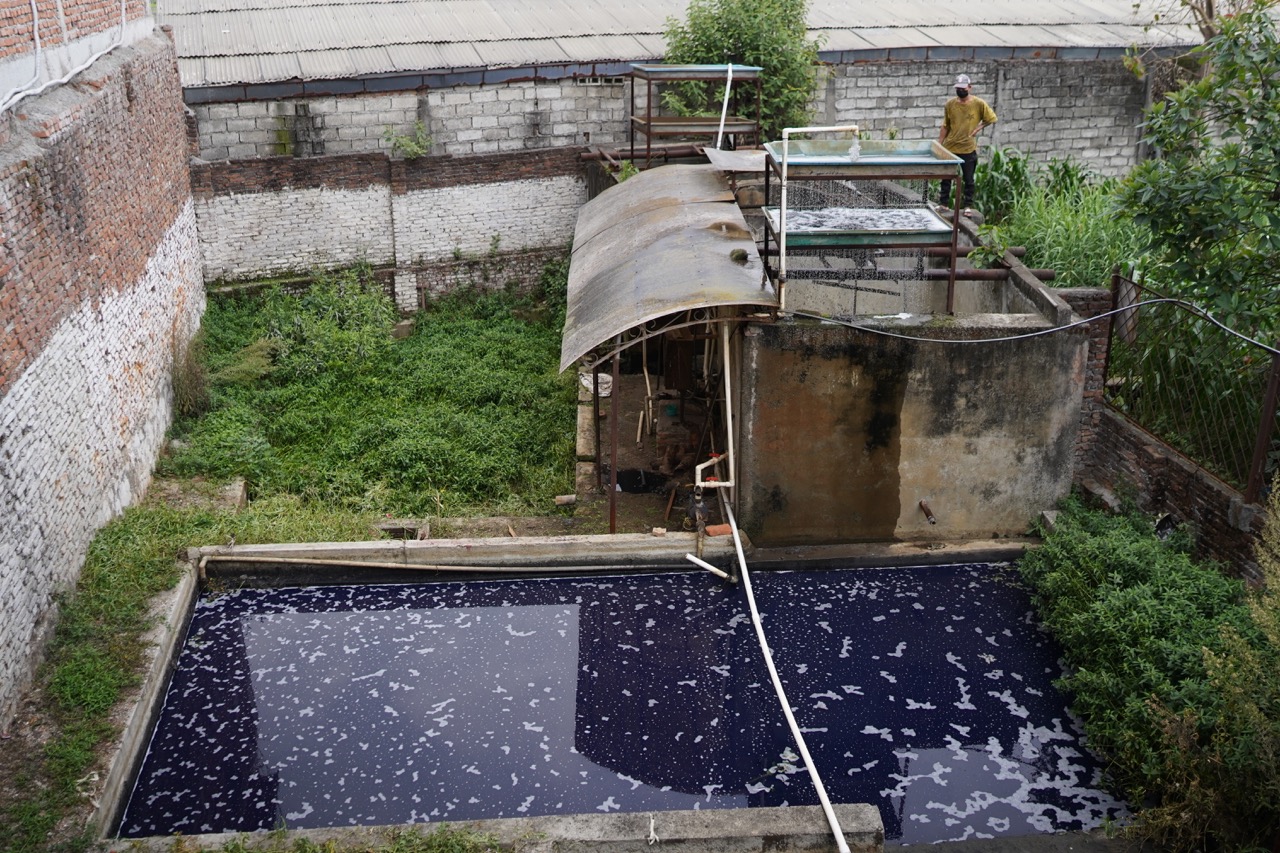
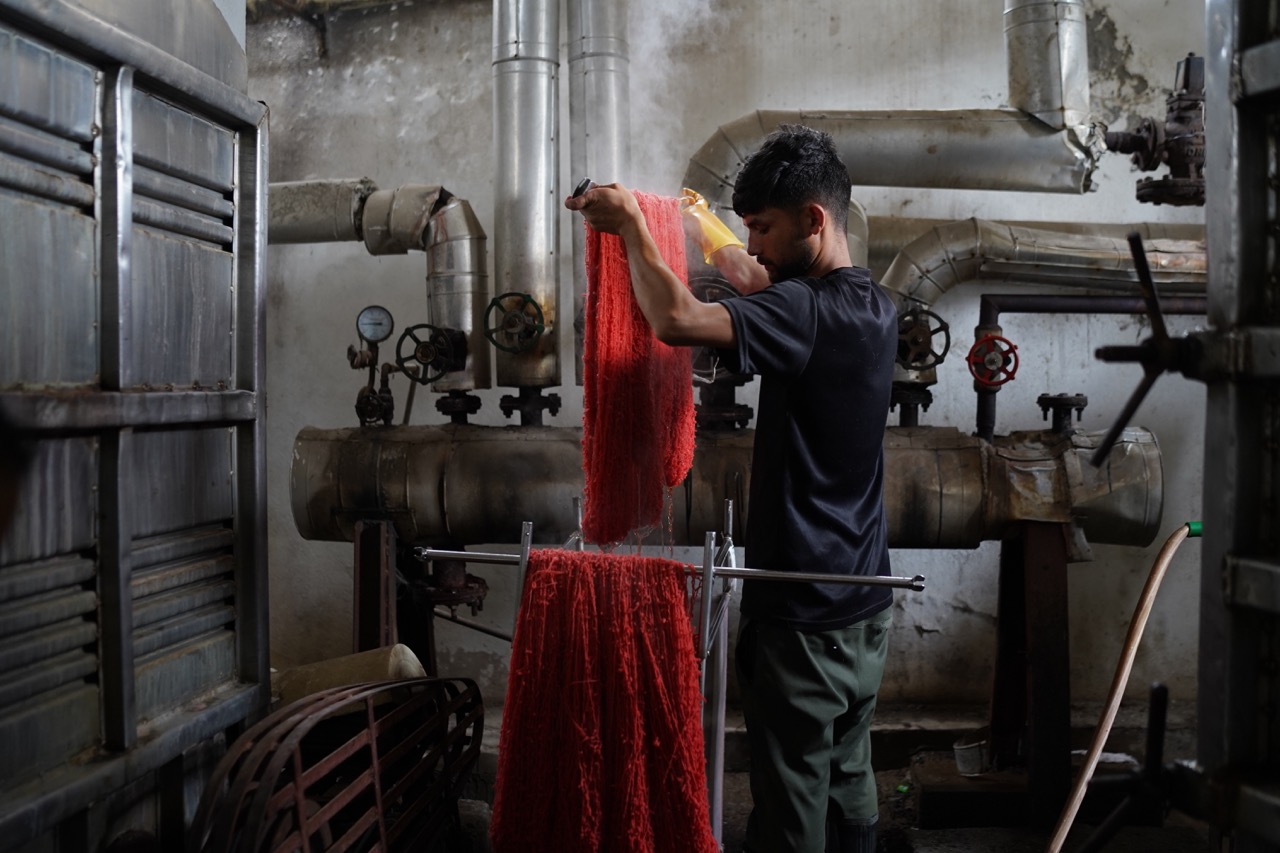
“Our responsibility to protect the environment is a core part of who we are.”
— Suman Shrestha
This commitment to quality has become even more important in light of shifting market dynamics. As Suman Shrestha reflects on how different the dyeing industry was in earlier days. “Back then, we used to dye 30 to 35 tons of wool and fabric per month,” he recalls. “Bulk orders were simpler to manage with uniform colour tones and large quantities. Today, however, the market has shifted dramatically. Orders have become smaller, customised, and diverse—requiring precise colour ranges, fabric types, and designs.”
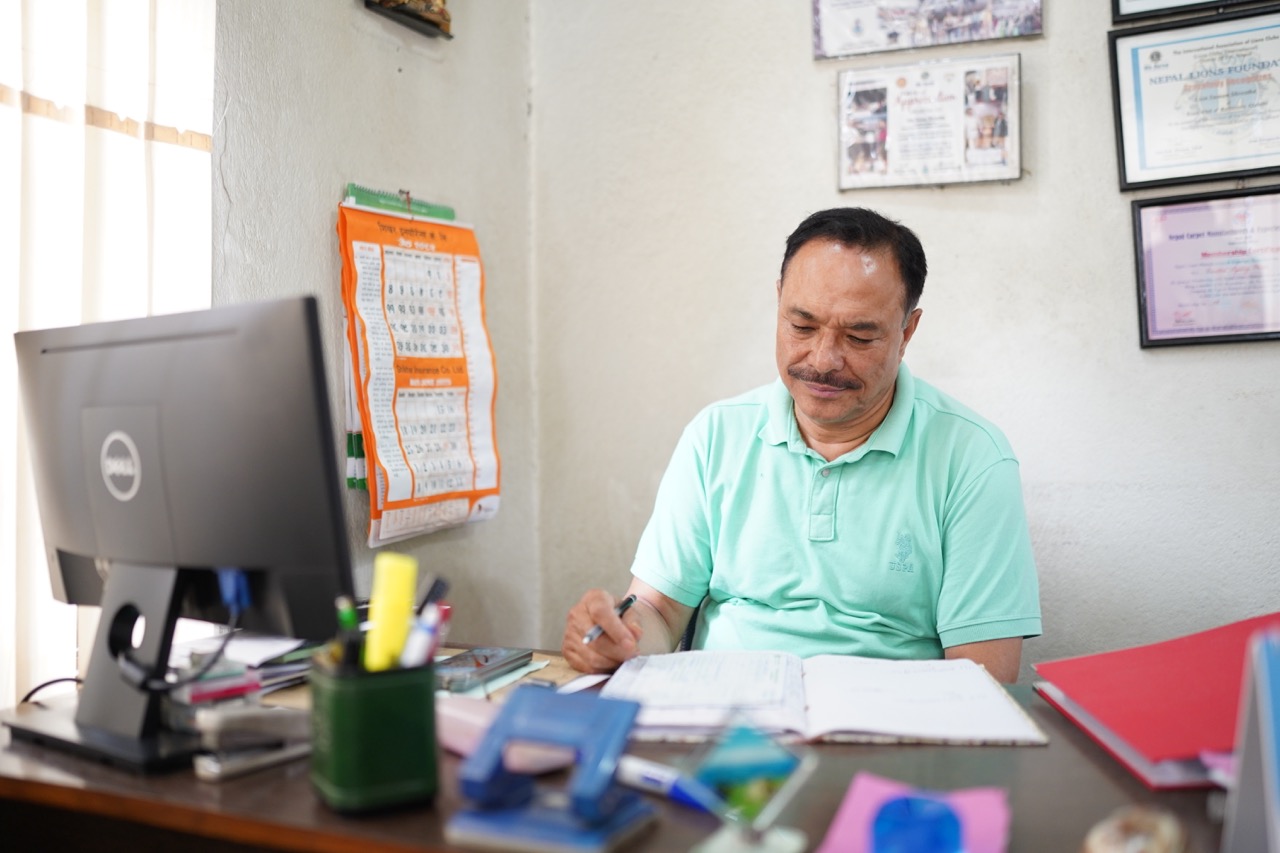
“Bulk orders were simpler to manage with uniform colour tones and large quantities. Today, however, the market has shifted dramatically. Orders have become smaller, customised, and diverse—requiring precise colour ranges, fabric types, and designs.”
—Suman Shrestha
These shifts have raised operational pressures—especially for companies like Boudha that invest in cleaner technologies and environmental compliance. But despite tighter margins, limited urban space, and growing customer expectations, the Shresthas remain committed to leading with care, precision, and ethical values.
Environmental Responsibility and Technological Innovation
In the early 2000s, Kathmandu’s rapid urban growth brought rising complaints about pollution from dyeing units—particularly smoke and untreated wastewater harming nearby communities. Like others, Boudha Dyeing faced pressure to relocate and joined a collective industry effort to find a solution. After exploring several sites, 12 out of 22 dye houses moved to Mulpani, near the Manohara River, close to the carpet hub in Bouddha. The area was planned as an eco-compliant dyeing estate with a shared wastewater treatment plant (WWTP), inspired by industrial zones like Hetauda, Nepal’s first planned industrial estate known for centralised infrastructure and environmental compliance.
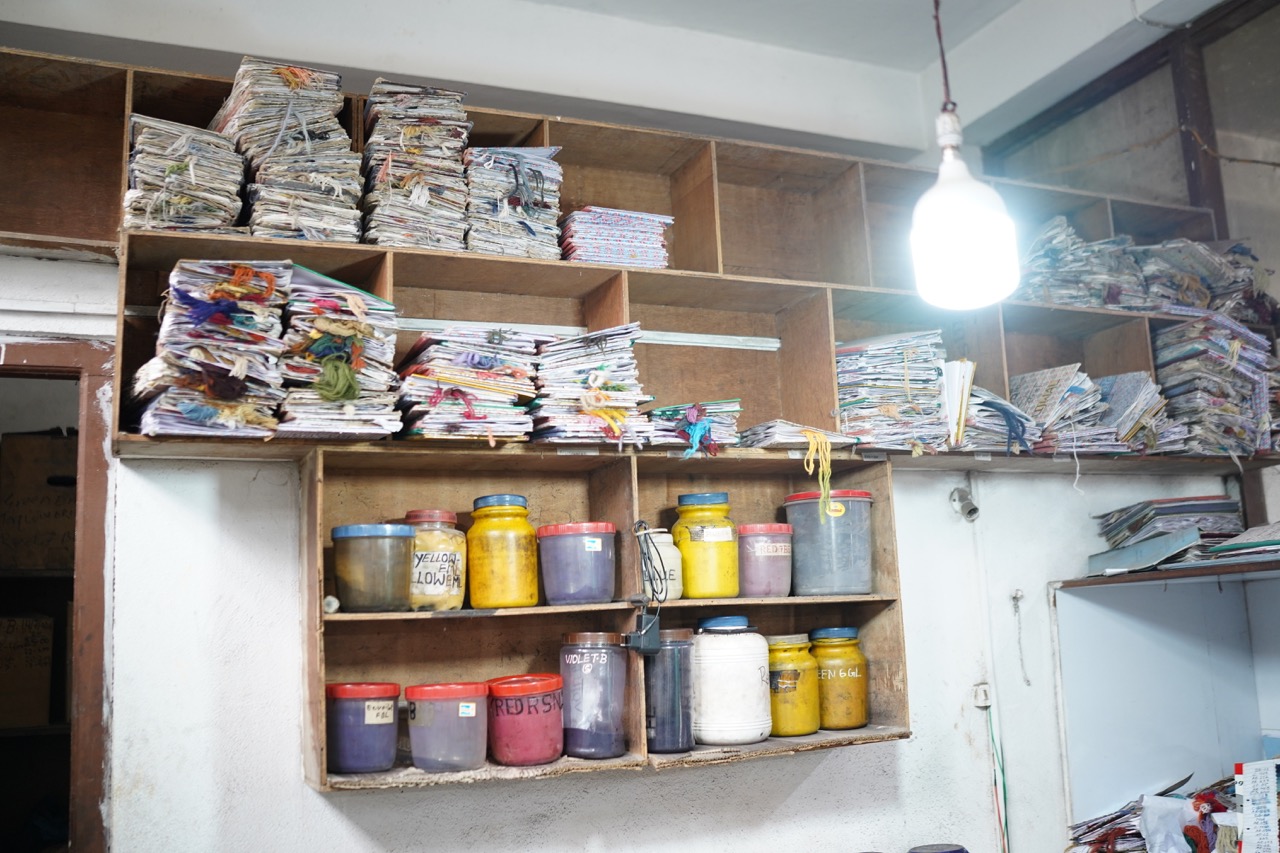
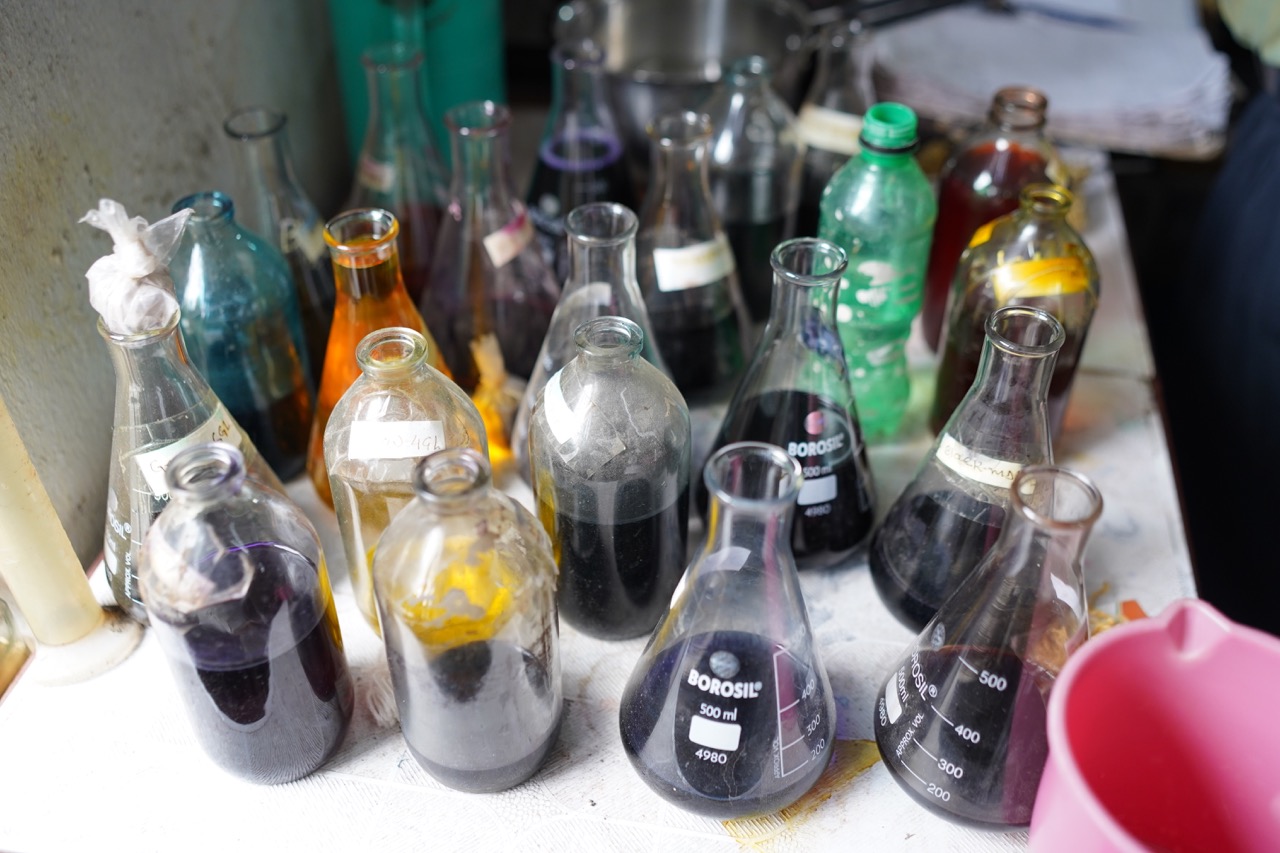
Despite initial momentum and donor support, the shared WWTP never materialised due to cost-sharing disputes, unclear leadership, and technical hurdles. Many dye houses eventually withdrew or shut down. Boudha Dyeing House, however, remained committed. Under the leadership of the Shresthas—and with technical assistance and co-funding from Label STEP—it became one of the few businesses to invest in and successfully operate its own multi-stage WWTP, the first of its kind in Nepal’s carpet yarn dyeing sector.
“I’ve been part of this industry from the very beginning. Much has changed in dyeing and carpet production over time, but even now there’s no female leadership elsewhere in the industry. As the person managing daily operations at Boudha Dyeing, I’m guided by strong ethical values, especially when it comes to fair labour and reducing environmental impact.”
Ratee Shrestha
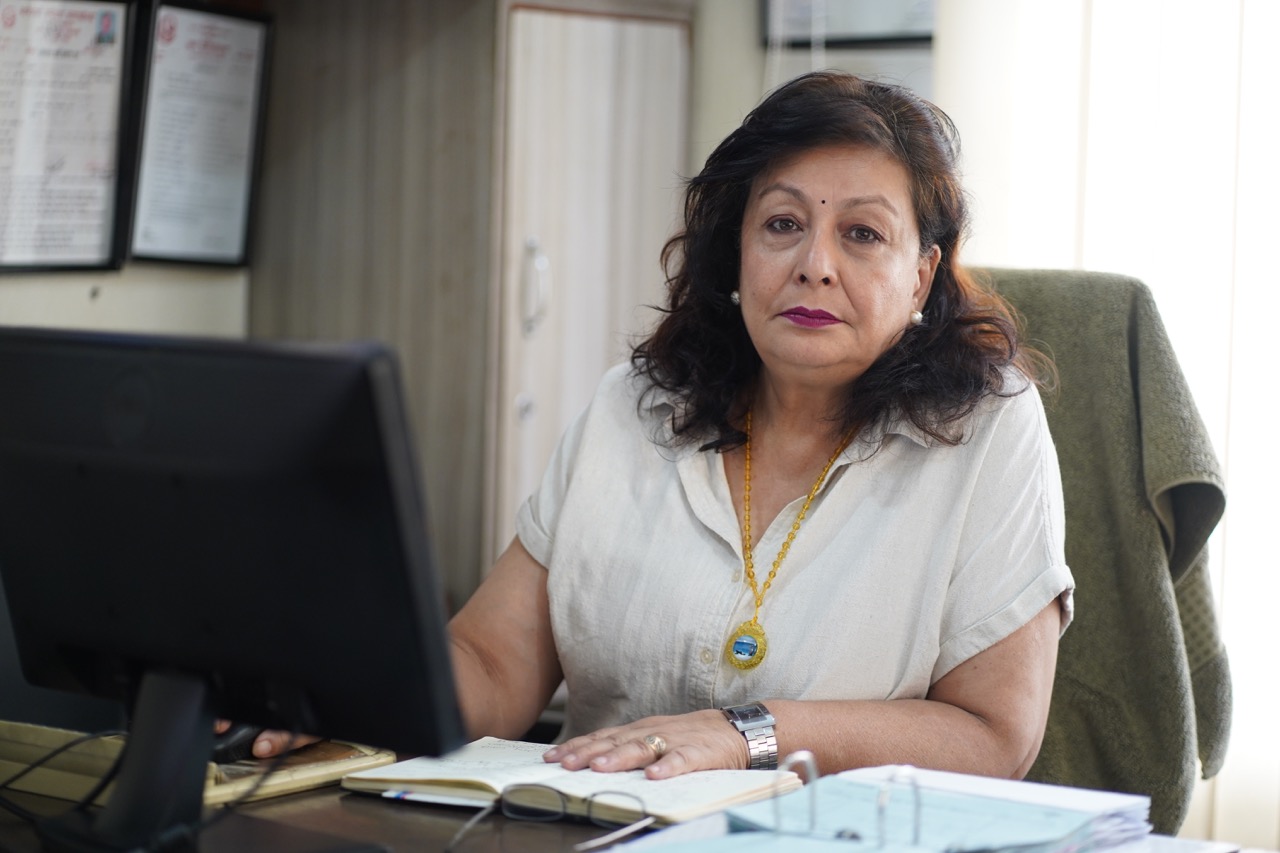
Today, Boudha continues to upgrade its operations, adopting cleaner technologies to meet evolving environmental standards and community expectations. It blends traditional knowledge with modern processes to improve product quality while reducing impact. The facility processes between 50,000 and 60,000 litres of water per day, and at peak times, even up to 80,000 litres, making water management a critical priority. Compared to similar large-scale dyeing houses in the region, Boudha also operates more efficiently—using about 2.06 tons of fuel (wood and sawdust) per ton of yarn dyed, versus around 3.67 tons in those facilities. This means that competitors may burn roughly 1.8 times more fuel to produce the same output, underscoring Boudha’s commitment to resource efficiency and environmental responsibility.
Key practices at Boudha Dyeing House include:
- Pre-treatment of yarn to remove mineral residues and impurities.
- Use of azo-free synthetic dyes to reduce health risks and pollution.
- A multi-stage wastewater treatment system with chemical/biological treatment, sedimentation, reverse osmosis, and reed beds.
- Adoption of water-saving techniques and energy-efficient machinery.
Despite these advancements, managing its own treatment system adds operational costs. Competing with cheaper dye houses that avoid such investments remains a challenge.
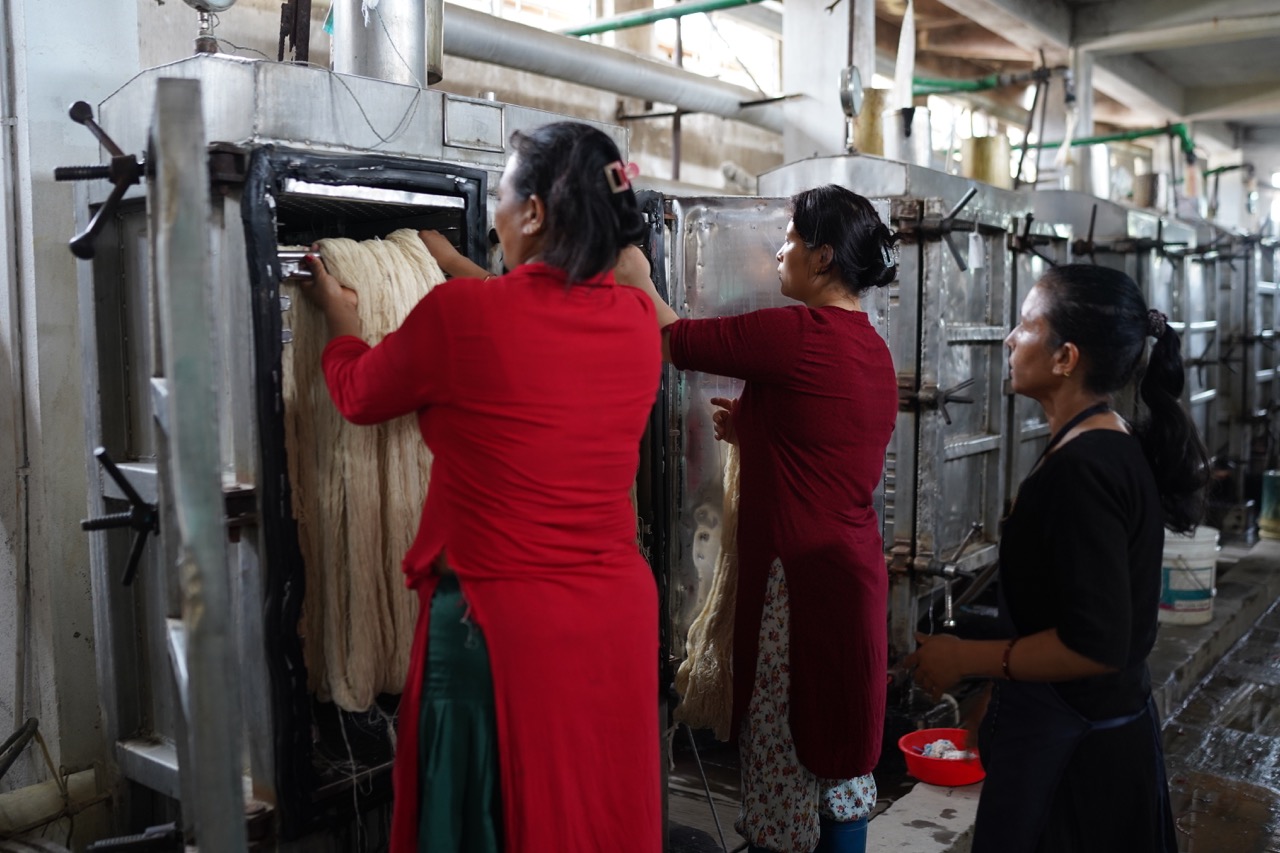
The Power of Partnership and Collective Action
Boudha Dyeing House’s journey goes beyond technology upgrades; it’s about vision, adaptability, and ethical leadership. Under Suman’s and Ratee’s guidance—who has also led the Nepal Woollen Yarn Dyeing Industries Association—the company has pioneered cleaner dyeing practices and championed worker welfare through fair wages, social security, training, and a safe workplace. This strong ethical foundation has fostered remarkable loyalty and retention among workers.
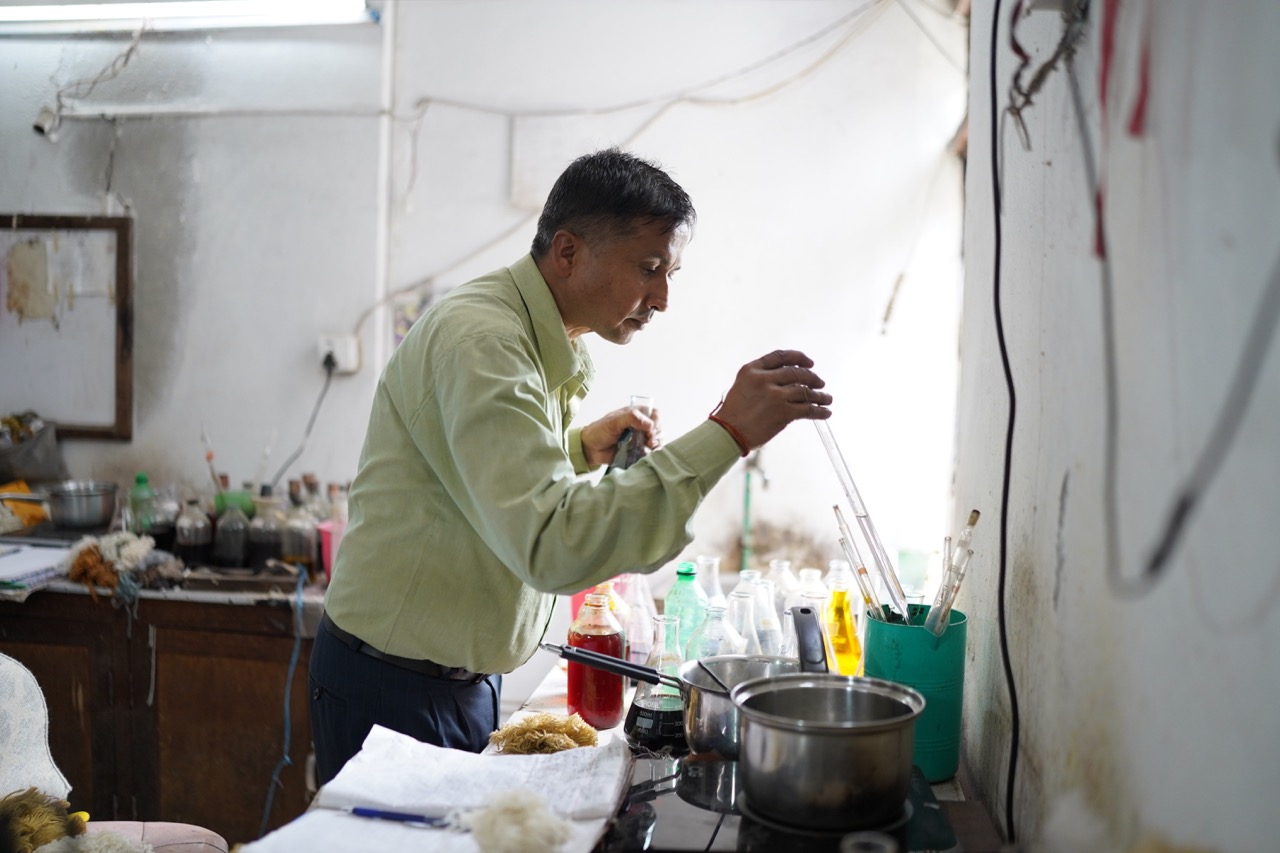
Longstanding partnerships such as the one with Label STEP since 2000 demonstrate how collaboration between NGOs, brands, and buyers supports critical improvements across the industry. Still, systemic challenges remain: the failed attempt at a shared wastewater treatment plant in Mulpani revealed gaps in collective responsibility and regulatory enforcement. According to Mr. Shrestha, these obstacles underscore the need for self-reliance and stronger alliances with like-minded partners to advance sustainable progress.
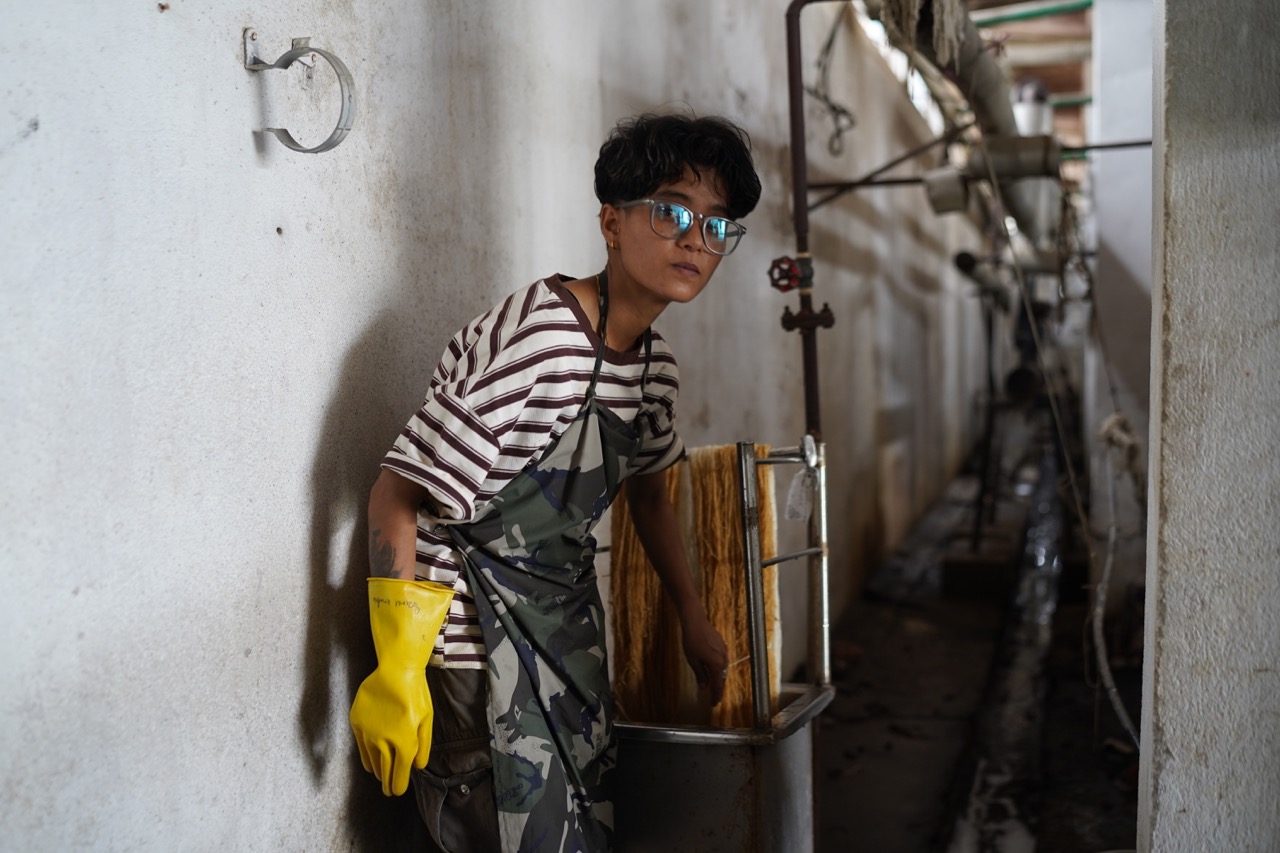
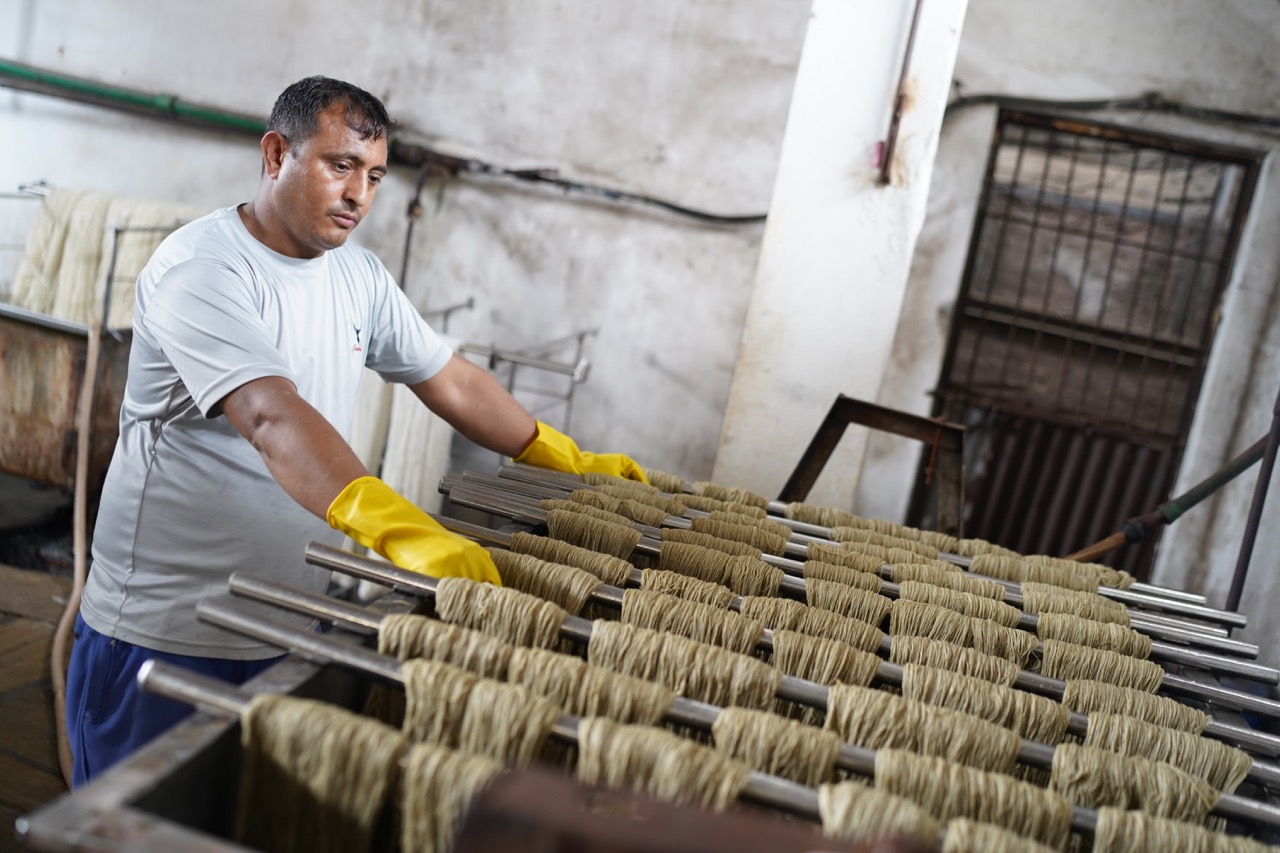
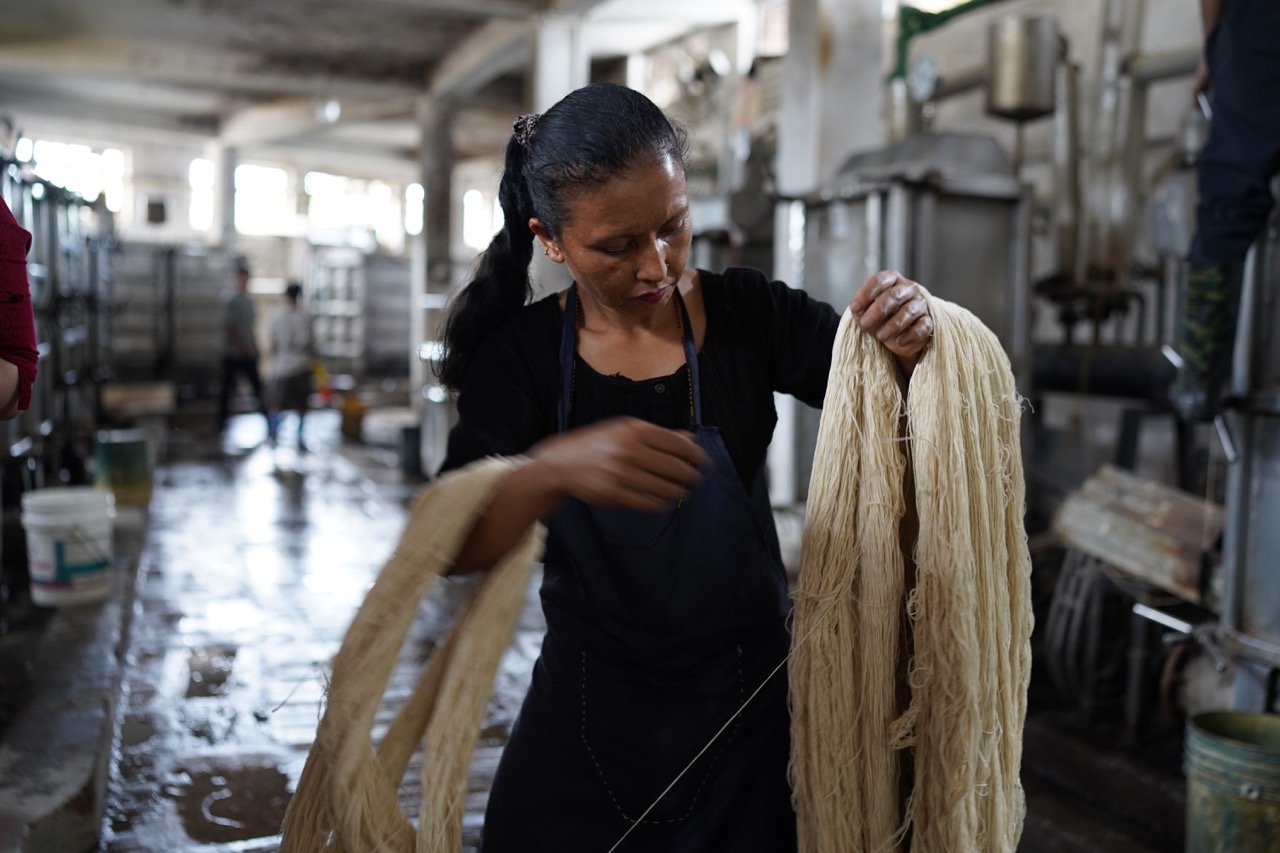
“I envision a future where collective action ensures fair, ethical, and environmentally sound practices that benefit workers, businesses, and consumers alike.”
— Suman Shrestha
Looking Ahead: Recommendations for a Responsible Future
Sustained progress depends on consistent regulatory monitoring, strong enforcement, and a culture of accountability. Periodic audits and government oversight remain essential to maintaining environmental standards and protecting community health. Suman stresses that such mechanisms are crucial to keeping industries aligned with their social and ecological responsibilities. Furthermore, fostering solidarity across the supply chain is vital. Shared responsibility, transparency, and cooperation are necessary to overcome resource constraints and infrastructure gaps.
